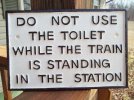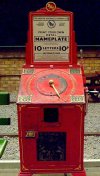-
Welcome to this forum . We are a worldwide group with a common interest in Birmingham and its history. While here, please follow a few simple rules. We ask that you respect other members, thank those who have helped you and please keep your contributions on-topic with the thread.
We do hope you enjoy your visit. BHF Admin Team -
HI folks the server that hosts the site completely died including the Hdd's and backups.
Luckily i create an offsite backup once a week! this has now been restored so we have lost a few days posts.
im still fixing things at the moment so bear with me and im still working on all images 90% are fine the others im working on now
we are now using a backup solution
You are using an out of date browser. It may not display this or other websites correctly.
You should upgrade or use an alternative browser.
You should upgrade or use an alternative browser.
The Railways
- Thread starter Ray Griffiths
- Start date
mw0njm.
A Brummie Dude
Richard Dye
master brummie
What a blast from the past! I never remember it being that expensive & I always seemed to mess up the letters!
Radiorails
master brummie
well, it would not have cost 10p in 1950. It was about 20 years before the decimalization rip-off happened.
mw0njm.
A Brummie Dude

toilets on UK trains
In UK trains built before 1980, ‘direct discharge technology’ was used for the toilets – basically they emptied straight onto the track, with the aid of water flushed from a tank. That changed in 1981 when the first train carriages with retention tanks were supplied. Yet it wasn’t until 1996 that all new rolling stock was fitted with tanks for effluent retention. And in 2018 10% of Britain’s train carriages were still disposing toilet waste straight onto the railway tracks.
Richard Dye
master brummie
I remember those signs........It's hard to believe that retention tanks were not made mandatory much earlier! :-(View attachment 190222
toilets on UK trains
In UK trains built before 1980, ‘direct discharge technology’ was used for the toilets – basically they emptied straight onto the track, with the aid of water flushed from a tank. That changed in 1981 when the first train carriages with retention tanks were supplied. Yet it wasn’t until 1996 that all new rolling stock was fitted with tanks for effluent retention. And in 2018 10% of Britain’s train carriages were still disposing toilet waste straight onto the railway tracks.
Richard Dye
master brummie
Movin right along!wow they are giving it some wellie





